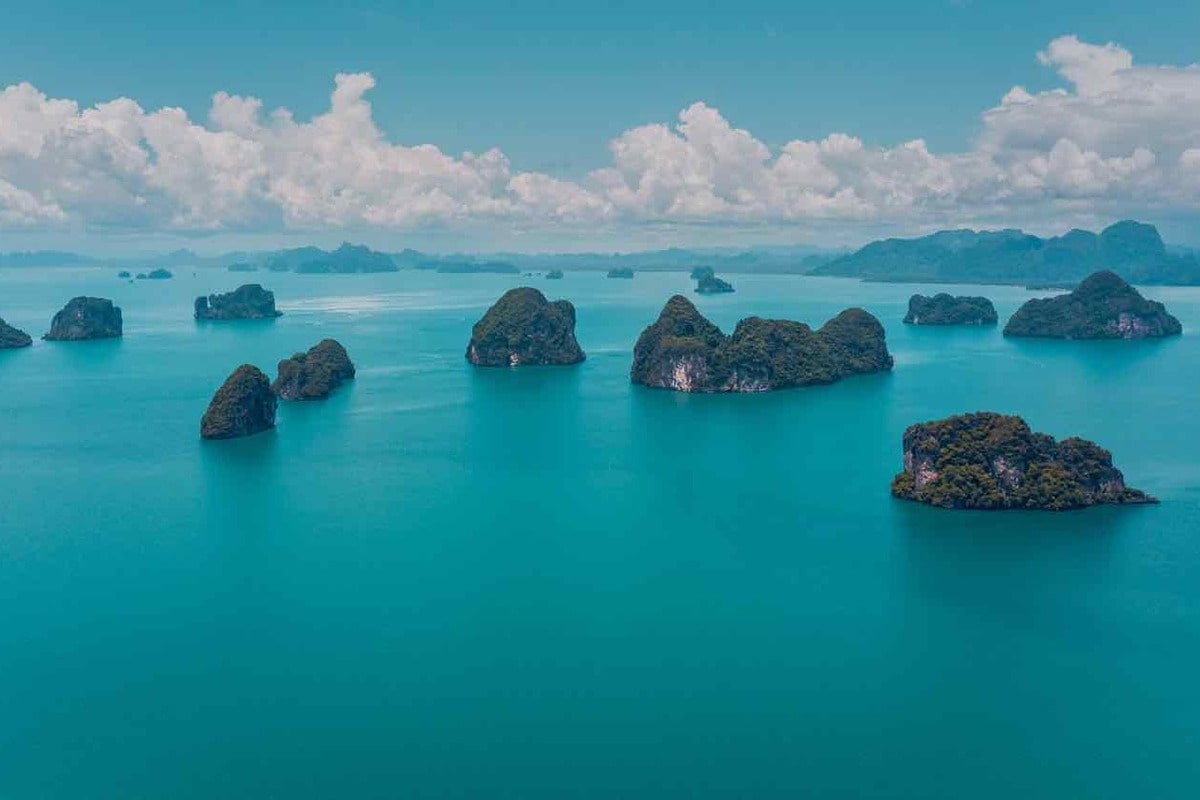The Andaman Sea is one of the lesser-known yet most fascinating bodies of water in the world’s oceans. Its warm, turquoise waters conceal not only a rich variety of flora and fauna but also many secrets that captivate researchers, travelers, and divers alike. This sea is where colonial history, geological activity, and coastal cultures converge. If you’re curious to learn some intriguing facts about the body of water connecting India, Myanmar, and Thailand, this article is for you. Below is a collection of interesting and informative facts you may not have known.
- The Andaman Sea is located to the east of India and is bordered by the Andaman and Nicobar Islands to the west and the Malay Peninsula to the east. It forms part of the eastern region of the Indian Ocean. The sea covers an area of about 600,000 square kilometers.
- This sea has a complex geological origin and lies in a subduction zone where the Indian Plate dives beneath the Burmese Plate. This position makes the Andaman Sea seismically active. It was this very location where the devastating 2004 Indian Ocean tsunami originated due to a massive underwater earthquake.
- The sea features a deep trench known as the Burma Trench, which reaches depths of over 4,500 meters. It is one of the deepest points in the region. The trench remains largely unexplored due to its difficult accessibility.
- The waters of the Andaman Sea are exceptionally warm, with average surface temperatures ranging from 26 to 29 degrees Celsius throughout the year. Such warmth creates ideal conditions for the development of coral reefs. The sea hosts entire colonies of vibrant corals and exotic fish.
- Numerous marine mammals inhabit the Andaman Sea, including dugongs, which are considered vulnerable species. These creatures are the focus of various marine conservation programs. The sea is also home to dolphins, whales, and sea turtles.
- The Andaman Islands, surrounded by this sea, are home to several indigenous tribes who live in isolation from modern civilization. One such group, the Sentinelese, still avoids almost all contact with the outside world. Their traditional way of life has remained unchanged for thousands of years.
- One of the most unique natural phenomena in the Andaman Sea is bioluminescence. On certain nights, the water glows due to millions of microscopic organisms that react to movement. This sight leaves an unforgettable impression on anyone who witnesses it.
- Fishing in the Andaman Sea is a vital industry for coastal communities in Thailand, Myanmar, and India. People harvest not only fish but also shrimp, squid, and sea cucumbers. Local governments are implementing sustainable fishing practices to preserve marine resources.
- The Andaman Sea serves as a key maritime route linking Southeast Asian ports with the Bay of Bengal. Oil tankers, container ships, and other cargo vessels frequently travel through this sea. Its strategic importance in global trade continues to grow.
- The coastal zone features saltwater mangrove forests that provide essential ecosystems for birds, fish, and crabs. These mangroves act as natural filters and protect shorelines from erosion. They are also significant for studying the effects of climate change on coastal areas.
- The climate around the Andaman Sea is influenced by monsoon seasons, with wet summers and dry winters. The monsoons bring heavy rainfall that encourages the growth of tropical vegetation. However, they can also cause landslides and flooding along the coast.
- Scuba diving in the Andaman Sea is considered some of the best in the world thanks to the clear water, diverse marine life, and sunken ships. Divers often encounter sharks, manta rays, and colorful clownfish. The most popular diving spots include the waters around Havelock and Similan Islands.
- The sea has a rich history tied to ancient maritime trade routes between India, China, and Siam. For centuries, caravans of ships passed through carrying spices, silk, gemstones, and other goods. Many old maps contain references to the Andaman Sea.
- The sea often experiences seasonal upwelling, where nutrient-rich cold waters from the depths rise to the surface. This boosts plankton growth and attracts fish and other marine creatures. During upwelling periods, fishing activity increases significantly.
- In some places along the sea floor, there are geothermal vents that release hot mineral-rich water. These vents create chemically rich environments inhabited by unique microorganisms. Studying these life forms opens new possibilities in biotechnology and astrobiology.
- The Andaman Sea is under constant environmental monitoring due to threats such as oil spills, plastic pollution, and wastewater discharge. The expansion of tourism and maritime transport places increasing pressure on its ecosystem. International organizations are now implementing programs to clean the waters and protect coral reefs.
- In the northern part of the sea, there are many small islands and reefs that serve as natural barriers against storms. These geological features play a crucial role in protecting coastal towns. Their conservation is key in adapting to climate change.
- In the cultures of coastal peoples, the Andaman Sea is often associated with spiritual beliefs. Some tribes believe the sea is inhabited by ancestral spirits and consider it a sacred space. Fishermen frequently perform rituals before setting sail, asking for the sea’s blessing.
- The sea’s marine algae are used not only as fish feed but also in medicine and cosmetics. In some regions, they are harvested by hand and exported to countries like Japan and South Korea. This creates additional income sources for local communities.
These fascinating facts about the Andaman Sea highlight how diverse and important this marine region is. It combines natural beauty, geological uniqueness, cultural heritage, and economic significance. Many of its secrets remain unexplored, inviting scientists and travelers to make new discoveries. The Andaman Sea is not just a location on the map but a dynamic world in constant motion.





